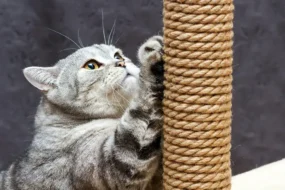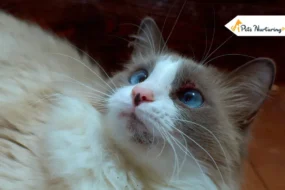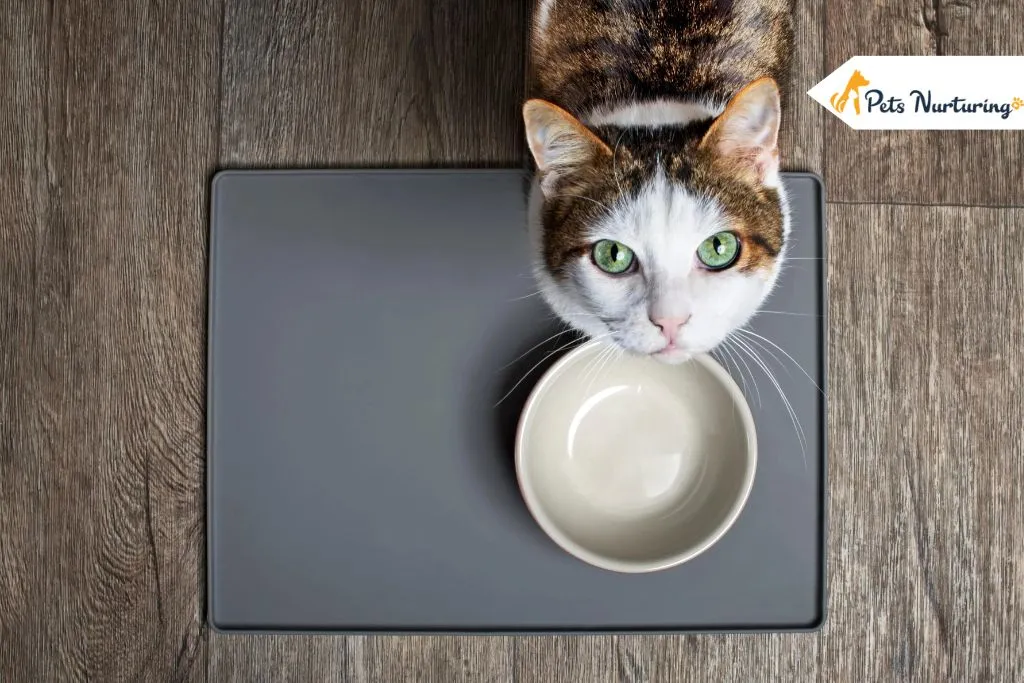
Is your cat lazy or not as active as it should be? If you see your cat getting lazy and less active, the reason could be dehydration. Yes, your cat could be thirstier than you think. Dehydration is a common problem among cats, and it is difficult to tell whether your feline friend is getting sufficient hydration. Both very young and very old cats are prone to dehydration as their bodies demand more water than middle-aged cats. Cats who already suffer from health problems are prone to dehydration and its effects.
Middle-aged cats are resilient to mild dehydration as they are stronger than very young and old cats. This post explains dehydration in cats and how to keep your cat hydrated to maintain its health.
What Causes Dehydration in Cats?
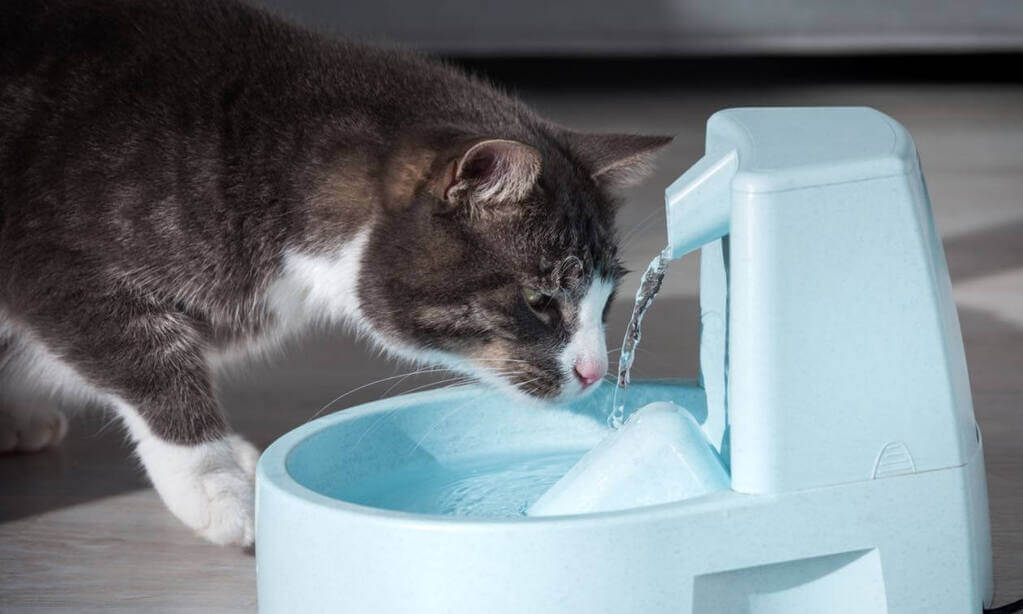
To put it in simple words, dehydration occurs in cats when they don’t consume enough water or fluids in their diet. It means when your cat is not getting enough fluids as it is losing, the result is dehydration.
There can be several reasons for dehydration in cats. Sometimes they may not drink enough water, while other reasons can be health issues like vomiting or diarrhea. Other reasons for dehydration in cats can be eating less canned foods or underlying health conditions like kidney disease.
As a result of dehydration, a cat may also experience changes in electrolytes in its body, such as sodium, potassium, and calcium. Cats need to have sufficient hydration and electrolyte balance in their body for the proper working and maintenance of organs properly.
Fortunately, dehydration in your feline friend is easy to recognize and treat. All you need is to visit a veterinarian to identify the underlying cause and get proper treatment for your cat.
How to Keep Your Cat Hydrated?
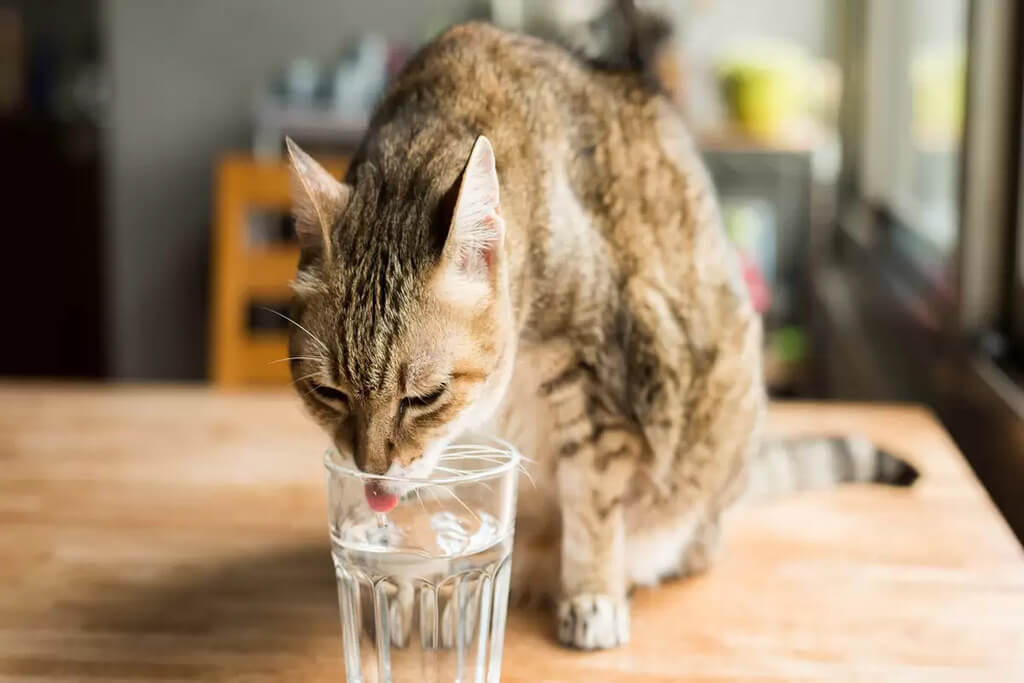
Cats need to consume sufficient water and fluids in their diet to maintain hydration in their bodies and avoid dehydration problems. You need to offer her a proper balance of foods and fluids to keep her hydrated and maintain good health. Check out these tips to keep your cat hydrated and keep dehydration issues away.
Keep the Water Bowl Clean
Cats like drinking water in a clean bowl. So, it is important to keep the water bowl fresh and clean. You or your pet sitter need to clean and refill the cat’s water bowl multiple times a day. In addition, you can use ceramic bowls for your cat as it keeps the water cooler than plastic or metal bowls.
Consider Mineral Water
Mineral water is healthy for animals as it contains multiple natural minerals that are good for cats’ health. If you have access to mineral water, you could offer it to your cat in small amounts to test whether it loves to drink it.
If your cat likes mineral water, you can offer it regularly. However, if it suffers from any medical condition, ask your veterinarian whether mineral water is good for your cat.
Add Variety with Water Fountains
Your cat might prefer circulating water, as some cats don’t like drinking stagnant water. Water fountains offer moving water in beautiful patterns and keep your felines hydrated throughout the day. Just make sure the fountain is spotless, change the water frequently, and wash or replace the filters as needed.
Drop a few ice cubes into the water in the water fountain to pique your cat’s attention. Your cat will notice them since they will be bobbing around due to the current.
Canned Food Soups
If your cat loves canned foods, you can add some water to them. In addition to foods, there are canned soups that you can prepare easily by adding warm water. Canned soups come in powdered form and it takes only a few minutes to prepare them.
Some are pre-prepared, and all you need is to add warm water, stir gently and offer it to your cat. Canned soups for cats are great for hydration and they contain multiple vitamins, and minerals essential for a cat’s health.
Add Some Flavor to the Water
Wild cats love natural unflavored water from ponds and streams. However, domestic cats may not prefer unflavored foods. You could try adding a bit of salmon, tuna, or clam juice to their water bowl to add some flavor. Start with a 1/4th teaspoon in one bowl, and you could increase the quantity to one teaspoon until you find the mixture that works well for your pet. However, don’t add more than one teaspoon in a day. Try to avoid using clam juice if your cat suffers from heart or kidney problems.
Chicken Broth or Bone Broth
Another thing you can try is low-sodium chicken broth or turkey bone broth powder. There are many bone broth products available for cats. You can try different products and check what your cat loves the most.
However, make sure to stir the powder gently to make it dissolve completely in the water before offering it to your cat. It is best to use warm water as the powder will dissolve immediately. You can store it overnight if it is recommended on the can, but it’s best to prepare it fresh every time for your cat.
Create Multiple Options
Cats are curious, and they are intrigued by new things. Some are intrigued by new colors, and some by ice cubes bobbing in the water. Try to add some variety by offering your kitty multiple options for drinking water.
You can use different colors of water bowls, and add flavors and ice cubes to the bowls. Buy a water fountain, if your cat is attracted to moving water. Offering multiple options will keep your cat interested in drinking more water throughout the day.
Summing Up
Hydration is important for the proper functioning of tissues and organs. You can try the above tips to keep your cat hydrated. However, if you notice severe dehydration symptoms in your cat, it may be due to a medical condition.
It is always best to consult your veterinarian to identify the underlying cause and let your cat receive proper treatment. Following the tips in this post can help you to keep your cat hydrated throughout the day.
Keep reading:









